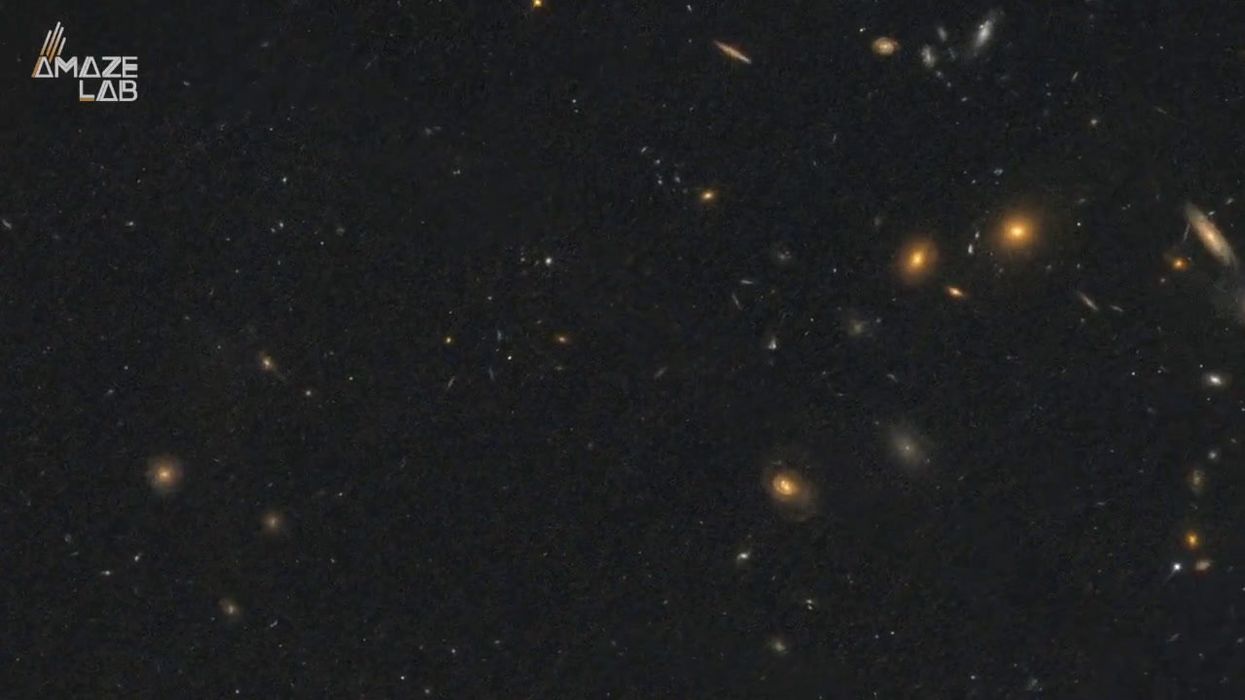Harriet Brewis
Feb 25, 2024
Scientist Say There Could Be Planets Made of Dark Matter Lurking Out …
ZMG - Amaze Lab / VideoElephant
Charlie Brooker, eat your heart out. The universe may be home to a very different black mirror, which has secretly been staring us in the face since time began.
New research suggests dark matter – the mysterious substance that seems to make up most of the mass in the universe – may be a mirror of our own, but with a broken set of rules.
Despite its abundance (for every 1kg of normal matter there’s around 5kg of dark), this elusive material doesn’t interact with light or matter made up of atoms.
The only way experts are able to detect it is through its subtle gravitational influence on objects, for example, the motions of stars within galaxies, as Live Sciencenotes.
And yet, scientists now think that dark and normal matter may be intrinsically linked as two sides of the same coin.
In their study, published in the preprint journal arXiv, a team based at the University of Maryland propose that for every physical interaction in normal matter, there's a mirror of it in dark matter.
This would amount to a totally new kind of symmetry in nature – bringing together the worlds of normal and dark matter.

In the paper, the team, led by theoretical physicist Manuel Buen-Abad, posit that this mirroring may help explain why there are similar amounts of dark and normal matter in the universe – which they consider to be a strange coincidence.
Another strange coincidence is that, in the physics of normal matter, neutrons and protons have almost the exact same mass, which allows them to bind together and form stable atoms.
If a proton was just the slightest bit heavier, it would be totally unstable and decay in a matter of minutes, which would make the formation of atoms impossible.
In this hypothetical scenario, the universe would be an ocean of free-floating neutrons.
Buen-Abad and his colleagues suggest that this imaginary, broken cosmos may, in fact, exist in the dark mirror version of our universe.
Perhaps, they theorise, a special combination of physics led to the creation of protons with roughly the same mass as neutrons. But in the dark matter mirror, that combination was different – causing the "dark proton" to evaporate and leave behind "dark neutrons" — what we identify as dark matter.
Still, whilst this mirror model implies a whole range of potential interactions among dark matter particles — for example, dark atoms and a dark periodic table of dark elements — there can't be too much interaction, as Live Science points out.
If the dark matter were to interact with itself too much, it would clump together far more than it appears to in reality.
So most dark matter would need to be relatively simple — a sea of free-floating, neutral particles.

These additional interactions – a dark mirror of our chemical world – may help future scientists to test this theory.
In the chaos of the early universe, normal matter underwent nucleosynthesis – when the first elements formed in a nuclear plasma.
If Buen-Abad and his team are right, dark matter would have gone through its own mirror nucleosynthesis.
This may have opened up channels between the two worlds, enabling them to affect one another.
By closely measuring the rate of element formation — something that the next generation of cosmological observatories aims to do — scientists may find evidence for one of these channels.
Then, humankind would finally get its first glimpse into a dark mirror universe.
Sign up for our free Indy100 weekly newsletter
Have your say in our news democracy. Click the upvote icon at the top of the page to help raise this article through the indy100 rankings
Top 100
The Conversation (0)














